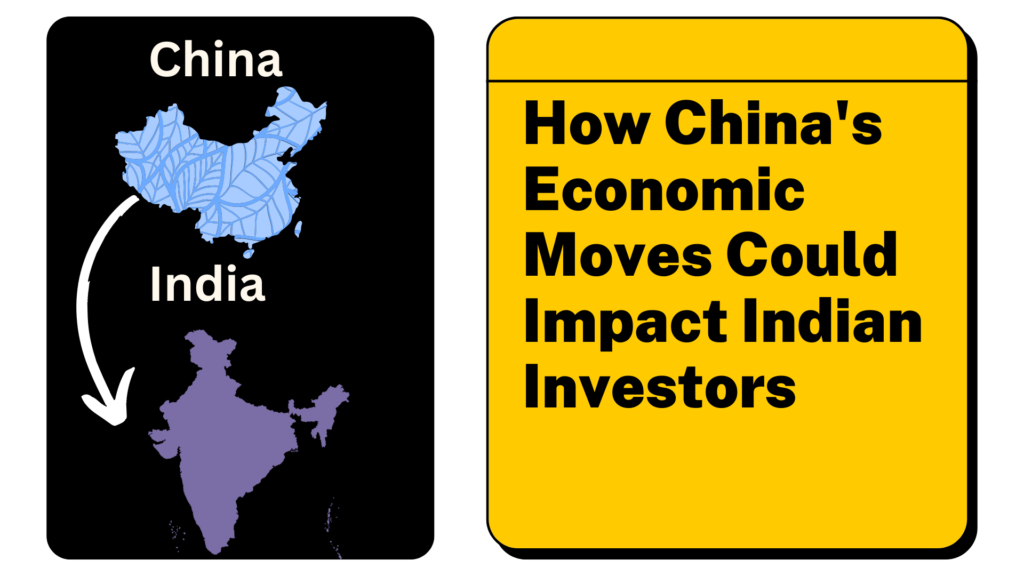As global trade tensions intensify, the escalating economic strategies between the United States and China hold significant implications for investors worldwide, including those in India. Recent developments highlight how China’s decision to ban exports of rare metals and consider devaluing its currency could reshape the investment landscape. For Indian investors, these shifts present both opportunities and risks.

China’s Rare Metals Export Ban: A Strategic Play
China’s restriction on exporting rare metals like gallium, germanium, and antimony to the US is a calculated response to ongoing trade tensions. These metals are critical for the tech and defense industries, and the ban is projected to cost the US over \$3 billion.
Impact on Indian Investors:
- Tech Industry Ripple Effects: Indian tech companies that supply to US firms may face delays or higher costs, impacting their profitability.
- Opportunity for Indian Manufacturing: This disruption could incentivize global companies to seek alternative suppliers. India’s burgeoning electronics and semiconductor industries could benefit, provided they ramp up production capabilities.
| Rare Metal | Primary Usage | Impact of Export Ban |
|---|---|---|
| Gallium | Semiconductors, LEDs | Increased costs for tech industries |
| Germanium | Fiber optics, infrared optics | Delays in production, higher expenses |
| Antimony | Flame retardants, alloys | Supply shortages for defense, tech |
Yuan Devaluation: Cheap Exports, Costly Imports
China is also considering devaluing the yuan in 2025 to counteract US tariffs. By weakening its currency, China aims to make its exports cheaper and maintain competitiveness. Historically, during Trump’s first term, the yuan’s devaluation of over 12% helped China mitigate tariff impacts.
Impact on Indian Investors:
- Cheaper Chinese Imports: Indian consumers and businesses relying on Chinese imports could benefit from reduced costs. This may lower input costs for sectors like electronics and machinery, boosting margins.
- Pressure on Indian Exports: Indian exporters to global markets may face tougher competition from cheaper Chinese products, particularly in price-sensitive sectors like textiles, pharmaceuticals, and consumer goods.
- Inflationary Pressures: A weaker yuan could make oil, gas, and other imports more expensive for China. If these costs spill over globally, India could see a rise in import costs for energy and commodities, potentially straining corporate margins and consumer wallets.
| Scenario | Impact on Indian Economy |
|---|---|
| Cheaper Chinese Exports | Tougher competition for Indian exporters |
| Costlier Global Commodities | Higher inflation and reduced corporate margins in India |
| Increased Import Dependency | Challenges for India’s manufacturing sector |
Global Currency Volatility
The People’s Bank of China (PBOC) has hinted at allowing the yuan to drop to 7.5 per dollar, a decline of about 3.5% from current levels. This could amplify currency market volatility, impacting investor sentiment worldwide.
Impact on Indian Investors:
- Forex Market Fluctuations: Indian investors holding US dollar-denominated assets or investing in international markets must prepare for increased volatility.
- Exporters and Importers: Export-heavy Indian companies could benefit from a weaker rupee, while import-dependent firms might face higher costs.
| Key Factors | Potential Impact on Indian Investors |
|---|---|
| Forex Volatility | Risks for global investments and USD-based holdings |
| Export-Driven Sectors | Boost for IT, textiles, and pharma sectors |
| Import-Intensive Sectors | Increased costs for energy and raw materials |
Strategic Insights for Indian Investors
- Diversify Investments: Exposure to sectors less dependent on Chinese imports or exports to China can provide a safety net. Indian software services, pharmaceuticals, and renewable energy sectors may offer resilience.
- Monitor Commodity Prices: Investors should closely watch global oil and commodity prices, as changes could impact Indian energy companies and broader inflation trends.
- Focus on Emerging Opportunities: India’s Make-in-India initiative and government’s focus on electronics and semiconductor manufacturing could gain traction as companies diversify supply chains away from China.
Conclusion
China’s masterstroke—a combination of rare metals export restrictions and potential yuan devaluation—is a double-edged sword for the global economy. For Indian investors, these developments underline the need for vigilance and strategic allocation. While challenges such as increased competition and currency volatility loom, opportunities to capture growth in manufacturing and technology sectors abound. Staying informed and agile will be key to navigating this evolving landscape.
Good Insight